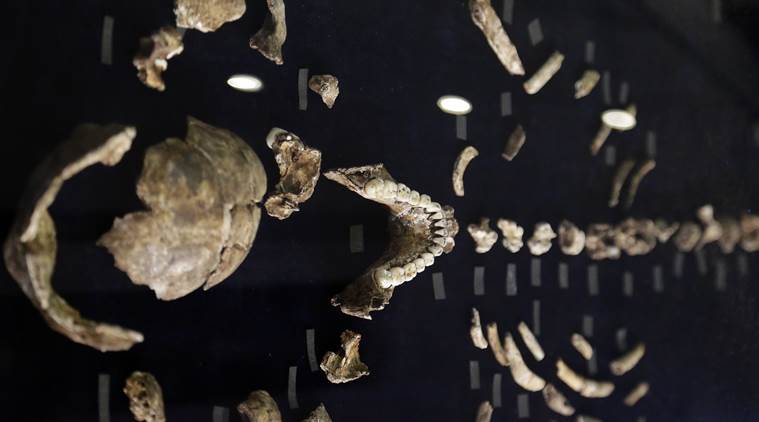Opinion Hello, homo naledi
For now, the new species is less a missing link, more a befuddling cousin.
 A composite skeleton of Homo naledi surrounded by some of the hundreds of other fossil elements displayed in Magaliesburg, South Africa, Thursday, Sept. 10, 2015. (Source: AP Photo)
A composite skeleton of Homo naledi surrounded by some of the hundreds of other fossil elements displayed in Magaliesburg, South Africa, Thursday, Sept. 10, 2015. (Source: AP Photo)  A composite skeleton of Homo naledi surrounded by some of the hundreds of other fossil elements displayed in Magaliesburg, South Africa, Thursday, Sept. 10, 2015. (Source: AP Photo)
A composite skeleton of Homo naledi surrounded by some of the hundreds of other fossil elements displayed in Magaliesburg, South Africa, Thursday, Sept. 10, 2015. (Source: AP Photo)
Deep in a South African cave, scientists have found the fossilised remains of a long-lost cousin. Christened homo naledi, this primitive relative of homo sapiens boasts a befuddling combination of features: small brain, ape-like fingers, human-esque teeth and complex, modernish feet. It is sort of in between a human and a neanderthal, and to add another layer of complexity, the fossils show traits similar to those found on Lucy, one of the oldest known human ancestors, more than 2.5 million years old. Attempts at precisely dating the bones of the 15 ancients found in the remote cave system in a region named the “cradle of humankind” for the trove of human fossils found there, have so far failed.
The find is extraordinary and could alter our understanding of how modern humans came to be. One question the scientists who made the discovery are asking is how the remains got to those inaccesible caves, because the layout does not seem to have changed in thousands of years. They hypothesise that people either crawled to the bottom of a narrow, 12-metre long vertical shaft and died afterwards, or the bodies were dragged there. The latter scenario could indicate that the cave chamber was a burial site or tomb. Given that homo naledi had a brain the size of a baseball, the exhibition of ritualistic behaviour would be cause to re-evaluate our assumptions about the evolution of cognition.
Victorian-era scientists sought evidence of Charles Darwin’s theory on the origin of our species in the form of a “missing link”, a transitional fossil that elegantly captured the traits of the apes that came before, and us. But this theory of a straight chain of evolution down from Lucy has been undermined by discoveries in recent times that have created a more crowded family tree. Homo naledi is the newest addition, and its secrets, when we decode them, will no doubt help us understand our place in the primordial soup.




